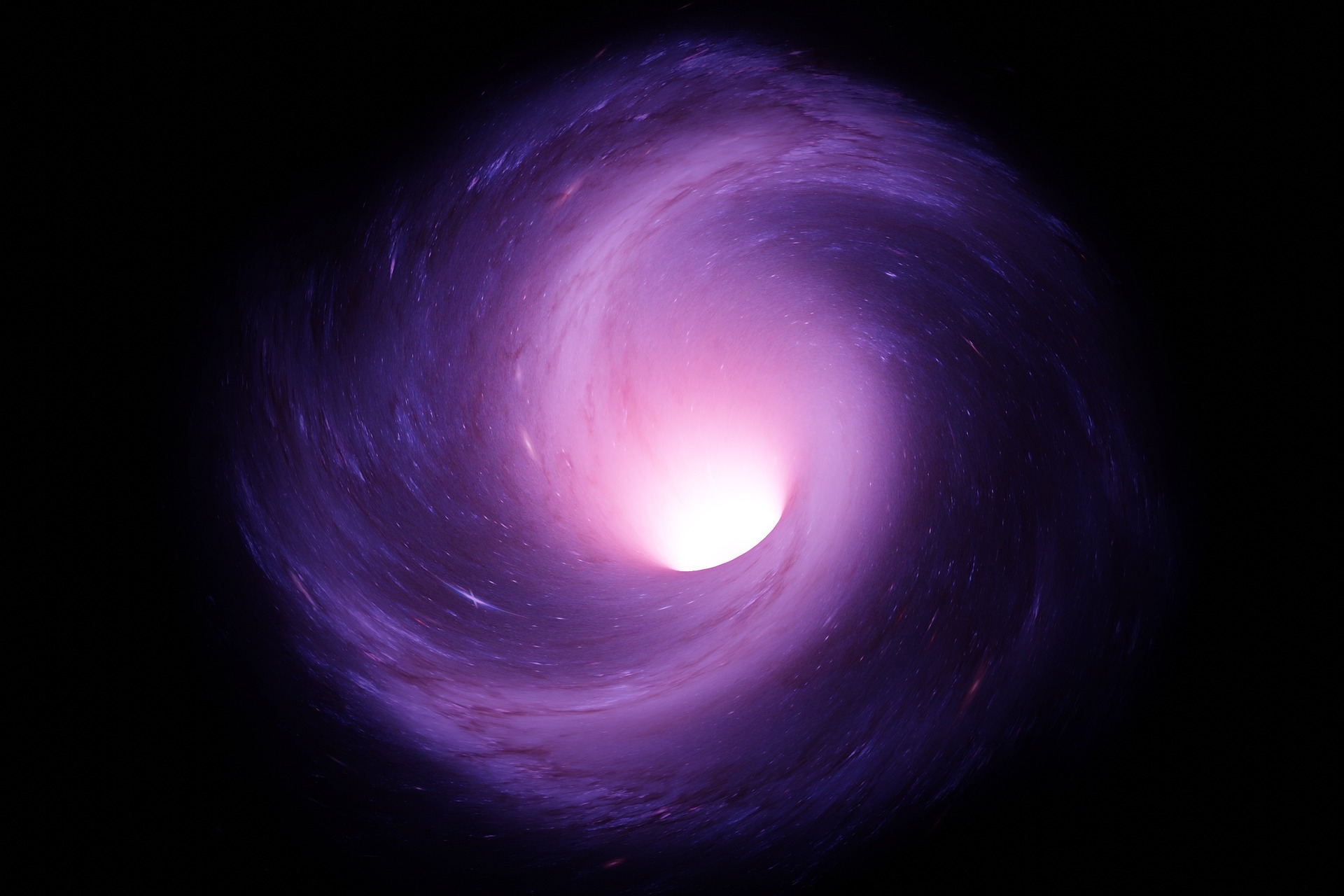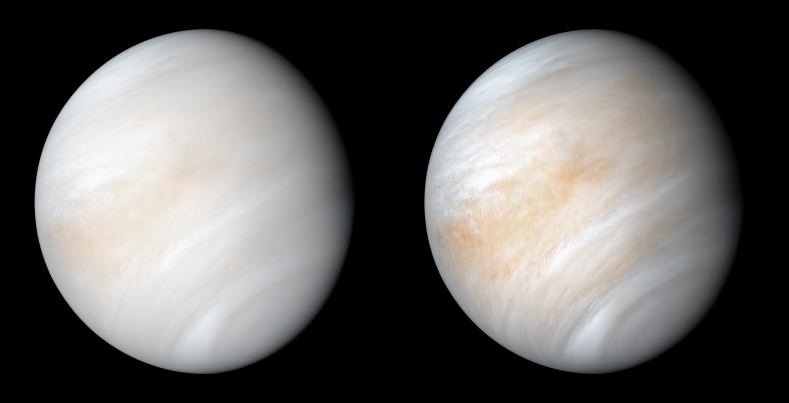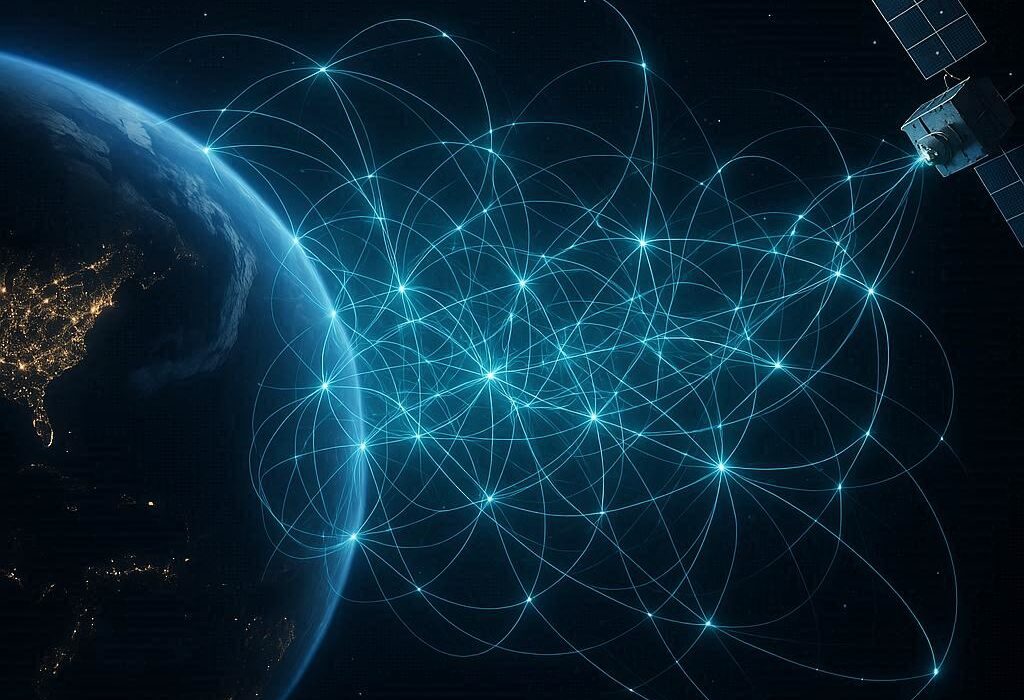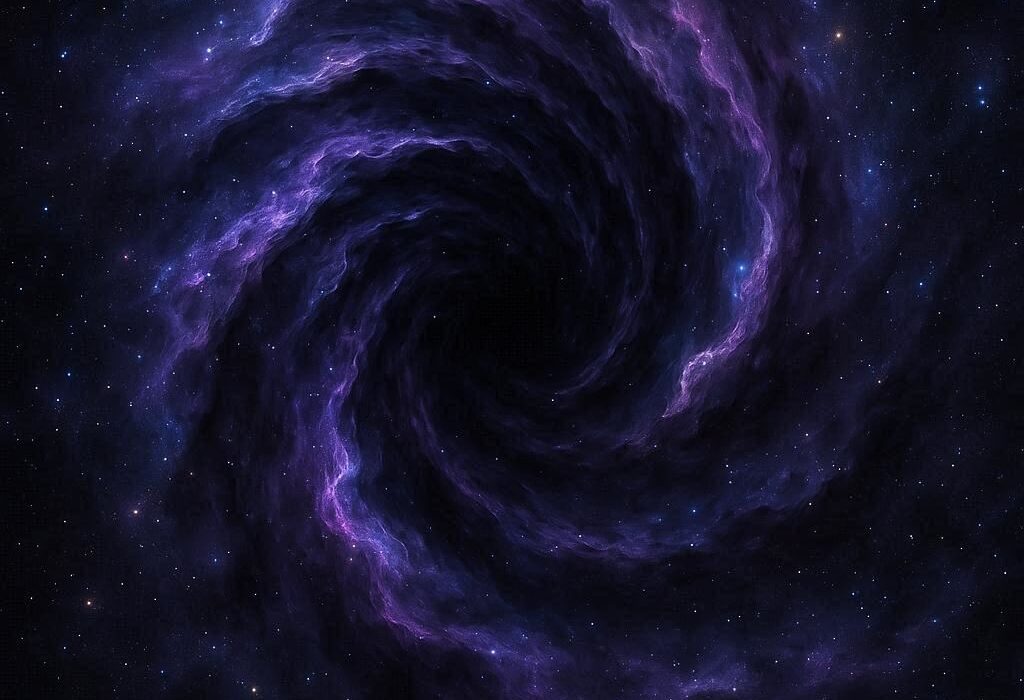For as long as humanity has gazed up at the stars, we have imagined ways of reaching them. The night sky is a tapestry of distant suns, galaxies, and nebulae, each a reminder of how vast the universe truly is. Even the closest star beyond our Sun lies more than four light-years away, a distance so immense that our fastest spacecraft would take tens of thousands of years to reach it. Against such cosmic immensity, the idea of instant or near-instant travel feels like a dream beyond imagination. And yet, physics has given us a concept that could make this dream possible: the wormhole.
A wormhole, in the simplest terms, is a hypothetical tunnel through space-time, connecting two distant points in the universe. Imagine folding a piece of paper so that two distant dots touch, then piercing a hole through them with a pencil. Instead of traveling along the flat sheet from one dot to the other, you leap instantly across the tunnel. In science fiction, wormholes have served as gateways to faraway galaxies, shortcuts to other dimensions, and portals through which civilizations explore and conquer the stars. But beyond fiction lies physics, and it is there that the question becomes both thrilling and complicated: could wormholes actually exist, and if they do, could they allow instant travel across the universe?
The answer is wrapped in layers of scientific theory, mathematical elegance, and profound uncertainty. Wormholes are not simply a creation of imagination—they emerge naturally from Einstein’s theory of General Relativity, the same framework that redefined gravity as the warping of space and time. To understand their possibility, we must first journey into the foundations of relativity and the strange ways in which the universe bends and twists itself.
The Fabric of Reality
Albert Einstein’s General Theory of Relativity, published in 1915, revealed that space and time are not separate entities but woven together into a four-dimensional continuum known as space-time. Massive objects such as stars and black holes bend this fabric, and the motion of planets, light, and even time itself follows these curves. Gravity, in this view, is not a force in the traditional sense but the result of space-time geometry.
This geometric perspective opened the door to extraordinary possibilities. If mass and energy could curve space-time, might the fabric of reality also allow shortcuts, bridges, or tunnels between distant points? Could the universe contain structures that permit not just warping but folding, connecting, and piercing? It was in this context that wormholes first emerged—not as fantasy, but as legitimate mathematical solutions to Einstein’s equations.
The Birth of the Wormhole Idea
The concept of a wormhole can be traced back to 1935, when Albert Einstein and physicist Nathan Rosen explored the equations of General Relativity to understand the nature of black holes. What they found was a mathematical structure that connected two regions of space-time by a bridge. This became known as the Einstein-Rosen bridge, the first theoretical wormhole.
At first glance, the bridge appeared to offer a passage between two universes or distant parts of the same universe. Yet there was a catch: the Einstein-Rosen bridge was unstable. The moment anything attempted to cross, the tunnel would collapse, sealing itself shut faster than light could traverse it. In other words, it was a tantalizing idea, but not a practical one. Still, the seed was planted. Physicists began to ask: could there be a way to stabilize such a bridge and make it traversable?
Decades later, in the 1980s, the idea was revived with new vigor. Theoretical physicists like Kip Thorne and Michael Morris explored the mathematics of traversable wormholes, investigating what conditions might allow them to remain open. Their work suggested that, under very unusual circumstances, a wormhole might indeed be held open long enough to permit travel. But to do so would require something exotic—matter that defies the rules of normal physics.
Exotic Matter and the Price of a Shortcut
For a wormhole to stay open, it must resist the natural tendency of gravity to crush it shut. Ordinary matter, with its positive energy and positive pressure, only adds to the collapse. What is needed is matter with negative energy density—what physicists call exotic matter. Unlike ordinary matter, exotic matter would push outward, counteracting gravity and preventing the tunnel from collapsing.
Negative energy is not entirely science fiction. In quantum physics, phenomena like the Casimir effect demonstrate that regions of negative energy density can exist, at least on microscopic scales. The Casimir effect arises when two plates are placed extremely close together in a vacuum, restricting the quantum fluctuations between them and creating a region of lower-than-normal energy. While this effect is tiny, it suggests that negative energy is possible in principle.
The problem is scale. To hold open a wormhole large enough for human travel, vast amounts of exotic matter would be required, far beyond anything we can currently generate or even imagine harnessing. Moreover, the laws of physics do not clearly permit the creation of such quantities, and some argue that they may forbid it entirely. Without exotic matter, wormholes remain unstable, collapsing before anything could pass through. Thus, the dream of instant cosmic travel hinges on a type of matter we have not yet discovered how to produce in useful amounts.
Wormholes and the Speed of Light
Even if a traversable wormhole could exist, would it truly allow faster-than-light travel? Strictly speaking, no object can exceed the speed of light within space-time. But wormholes cheat this rule by altering the geometry of space-time itself. If one mouth of the wormhole lies near Earth and the other near a distant star, then stepping through the tunnel would take you from one point to the other without traveling the intervening distance. From the perspective of an outside observer, the trip seems instantaneous.
This does not violate relativity, because no particle is actually moving faster than light in its own region of space-time. Instead, the wormhole provides a shortcut. It is as if the universe has been folded, and a tunnel connects the folds directly. For a traveler, the journey through the wormhole could take only minutes, even though the distance in normal space might be thousands of light-years.
This possibility has profound implications. It means that civilizations, if they could master wormhole technology, could connect distant corners of the galaxy, turning the universe into a network of gateways. Communication, travel, and exploration could transcend the limitations of light speed, transforming isolation into connectivity. But such dreams collide with the deep complexities of physics, especially when time enters the picture.
Wormholes and Time Travel
One of the strangest consequences of wormholes is their potential to act not only as spatial shortcuts but also as time machines. If one mouth of a wormhole were accelerated near the speed of light or placed in a strong gravitational field, time would pass differently for it compared to the other mouth, due to time dilation effects of relativity. When reconnected, the mouths would no longer be synchronized. Traveling through the wormhole could then allow a person to emerge not only in a different place but also in a different time.
This possibility raises deep paradoxes. Could someone travel back in time and alter history? Could wormholes create closed loops of cause and effect, where the future influences the past? These scenarios have fueled countless science fiction stories, but they also pose serious challenges to physics. Many scientists suspect that some mechanism—perhaps quantum effects—prevents such paradoxes from arising. Others believe the universe may allow them, with reality somehow self-consistently resolving contradictions.
Stephen Hawking, ever skeptical of time travel, proposed the “chronology protection conjecture,” suggesting that the laws of physics prevent time machines from being built. Yet the mathematics of wormholes continues to tease at the edges of possibility, hinting that space and time may be more flexible than we dare imagine.
The Shadow of Black Holes
Wormholes are intimately connected to black holes. In fact, one way to picture a wormhole is as a pair of black holes joined together. A black hole is a region of space-time where gravity is so intense that nothing, not even light, can escape. At its core lies a singularity, a point where density and curvature become infinite.
If black holes connect to wormholes, could one fall into a black hole and emerge elsewhere? Unfortunately, the answer appears to be no. The immense tidal forces inside a black hole would shred any traveler long before they reached another universe. Moreover, most wormholes associated with black holes collapse too quickly to be traversable. Still, theoretical models suggest that rotating black holes or charged black holes might contain wormhole-like structures, though whether they could exist in reality remains an open question.
Recent discoveries of gravitational waves—ripples in space-time produced by colliding black holes—have even prompted speculation about whether wormholes could produce distinctive signals. If wormholes exist, they might reveal themselves not by direct observation but by subtle signatures in the cosmic fabric.
Quantum Mechanics and Wormholes
The quest to understand wormholes touches on one of the greatest challenges in physics: uniting General Relativity with quantum mechanics. Relativity describes the large-scale structure of space-time, while quantum mechanics governs the microscopic world of particles. At the intersection of the two lies quantum gravity, a theory still out of reach.
Some physicists speculate that wormholes might provide clues. In quantum field theory, entanglement connects particles instantaneously across distance. Could wormholes be the geometric counterpart of entanglement, threads of space-time linking distant regions? The idea known as ER=EPR, proposed by Juan Maldacena and Leonard Susskind, suggests just that: Einstein-Rosen (ER) bridges might be physically equivalent to Einstein-Podolsky-Rosen (EPR) pairs of entangled particles. If true, wormholes could be the deep structure underlying quantum connections.
Such ideas remain speculative, but they reveal how wormholes force us to confront the most fundamental questions of physics. Are space and time continuous or discrete? Is the universe a smooth fabric or a network of quantum links? Wormholes, whether real or not, serve as a laboratory for exploring these mysteries.
The Practical Challenges
Even if wormholes are possible in theory, creating or stabilizing one poses challenges beyond imagination. First, we would need to generate or capture vast amounts of exotic matter with negative energy density. Second, we would need to manipulate gravitational fields on scales rivaling those of black holes. Third, we would need to protect travelers from deadly radiation, tidal forces, and quantum instabilities that might arise inside the tunnel.
No known technology approaches these requirements. Building a wormhole is not like building a spacecraft or even a particle accelerator; it is akin to engineering space-time itself. Some physicists argue that wormholes will forever remain beyond reach, artifacts of mathematics rather than engineering. Others believe that future civilizations, with knowledge and resources far beyond our own, might find ways to tame the fabric of the cosmos.
The Human Dimension
Beyond the equations and challenges lies something deeply human: the yearning for connection. Wormholes speak to our desire to overcome distance, to reach beyond isolation, to make the universe feel smaller and more intimate. They embody our refusal to accept the limits imposed by nature, our drive to imagine paths where none seem possible.
For scientists, wormholes are more than speculative curiosities. They are windows into the deepest structure of reality. For dreamers, they are symbols of hope—that perhaps the stars are not forever beyond our reach, that perhaps one day the barriers of distance will fall. For humanity, they remind us that our imagination is itself a form of travel, allowing us to leap across the universe with the mind, even if our bodies remain grounded.
Could Wormholes Truly Exist?
So, could wormholes allow instant travel across the universe? The cautious answer is: maybe, but probably not in the way we imagine. They are permitted by the equations of General Relativity, but whether nature permits them physically is unknown. They may require forms of matter and energy that cannot exist on macroscopic scales. They may collapse before anything can pass through. They may remain confined to the quantum realm, linking particles rather than galaxies. Or they may exist somewhere out there, hidden in the darkness between stars, awaiting discovery.
The beauty of science is that it thrives on such uncertainty. Wormholes may remain theoretical forever, but their study pushes us to refine our understanding of gravity, quantum mechanics, and the nature of the cosmos. They force us to ask: is the universe a rigid cage, or is it a flexible playground of infinite possibilities?
The Endless Horizon
As we stand today, our spacecraft venture only to nearby planets, our signals travel slowly across the solar system, and the stars remain unimaginably distant. Wormholes may never change that. But the very act of imagining them changes us. They remind us that the universe is stranger and more wondrous than we can comprehend.
Whether wormholes are real or not, they embody the spirit of exploration. They show that physics is not only about numbers and equations but about dreams, visions, and the courage to question the impossible. They tell us that the story of the universe is far from finished, and that each question opens new horizons.
Perhaps one day, in a future we can scarcely imagine, humanity will step through a wormhole and emerge among the stars. Until then, we carry the wormhole within us—in our curiosity, in our imagination, and in our unyielding desire to cross every boundary the cosmos lays before us.






